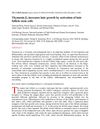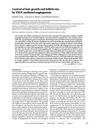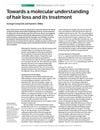Thymosin Beta 4 Induces Hair Growth Via Stem Cell Migration And Differentiation
September 2007
in “
Annals of the New York Academy of Sciences
”
TLDR Thymosin beta 4 helps hair grow by boosting stem cell activity.
The study investigated the effects of Thymosin beta 4, a 43-amino-acid molecule, on hair growth. It was found to promote hair growth in various rat and mouse models, including a transgenic mouse overexpressing Thymosin beta 4. The mechanism involved the promotion of follicle stem cell growth, migration, differentiation, and protease production. This research provided insights into the potential of Thymosin beta 4 as a therapeutic agent for hair growth by influencing stem cell behavior.





